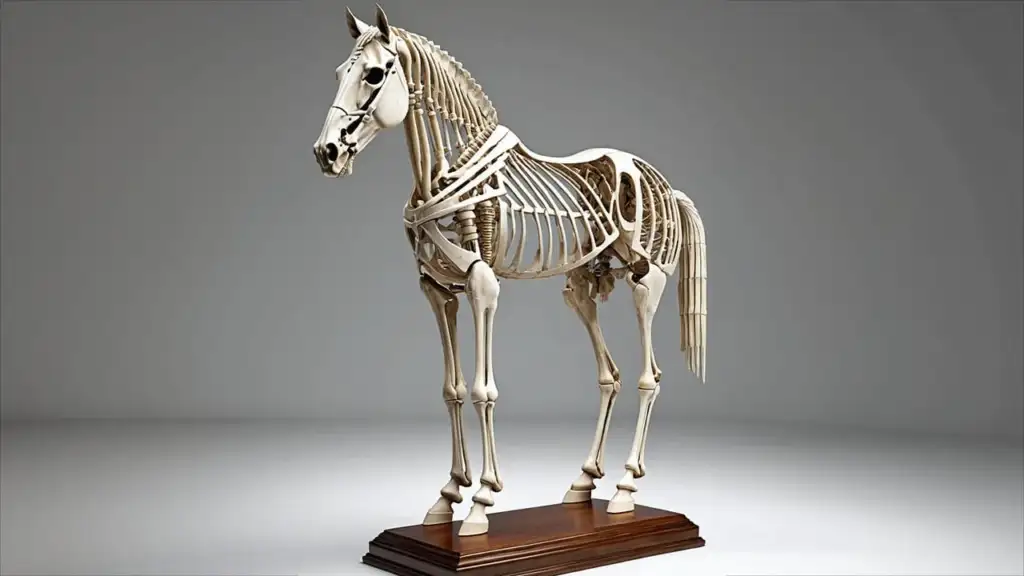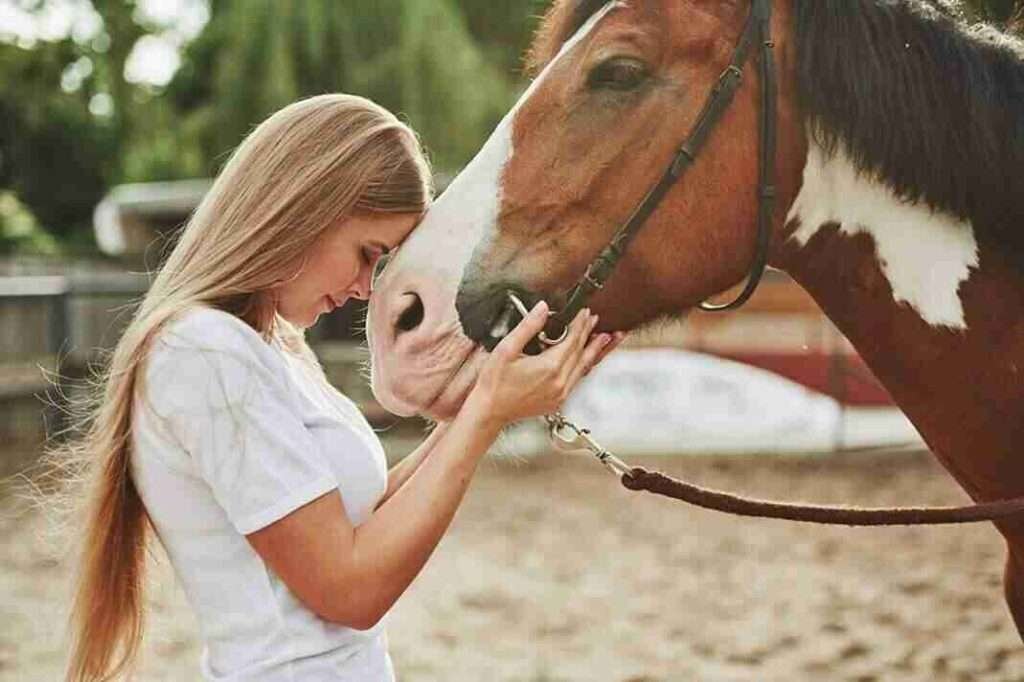A horse typically has 205 bones in its skeleton. The exact number may vary slightly depending on individual development and fusion of certain bones, 205 is the generally accepted average. A horse’s skeleton structure, provide support, protection, and facilitating movement. Horses, like many mammals, have an intricate skeletal system composed of bones. Here’s an overview of the number of bones in a horse:
Horse Skeleton: By the Numbers
Skull – 34 bones
The horse’s skull is a complex structure comprising numerous bones, including the frontal, parietal, occipital, and mandible. In total, the skull has around 34 bones.
Vertebral Column – 54 bones
Horses typically have 54 vertebrae in their vertebral column. These are divided into:
- cervical (neck)
- eighteen thoracic (mid-back)
- six lumbar (lower back)
- five sacral (pelvic)
- fifteen to twenty coccygeal (tail) vertebrae.
Ribs – 38 bones
A horse’s ribcage consists of 36 to 38 ribs, with variations depending on the breed.
Limbs – 80 bones
Front Limbs – 40 bones
Each front limb has approximately 40 bones, including the:
- humerus
- radius
- ulna
- carpal bones (knee)
- metacarpal bones (cannon)
- phalanges (pastern and hoof bones).
Hind Limbs – 40 bones
Each hind limb is composed of about 40 bones, includes:
- femur
- tibia
- fibula
- tarsal bones (hock)
- metatarsal bones (cannon)
- and phalanges.
Pelvis – 3 bones
The horse’s pelvis consists of three fused bones:
- ilium
- ischium
- pubis.
Tail Bones – 15 to 20 Bones
The tail, or coccygeal region, contains approximately 15 to 20 vertebrae.
You may like: Horse tail without Hair?
Final Words
A general estimate puts the total number of bones in a horse’s body at around 205 to 220 bones. It’s important to note that these numbers can vary slightly depending on factors such as the horse’s breed, age, and individual variations. The anatomy of a horse’s skeletal system should be in mind of horse owners, veterinarians, and anyone involved in equine care to ensure the well-being and health of these magnificent animals.





